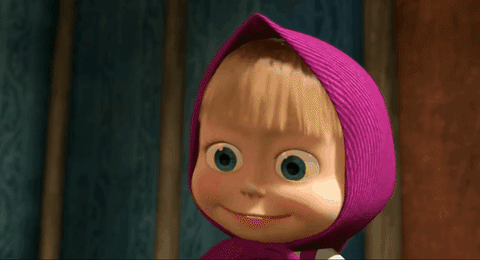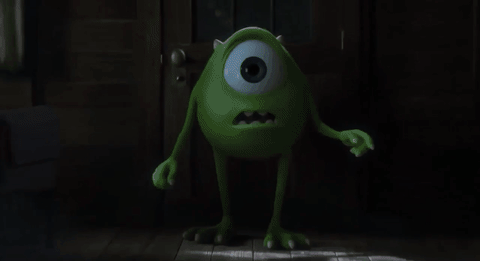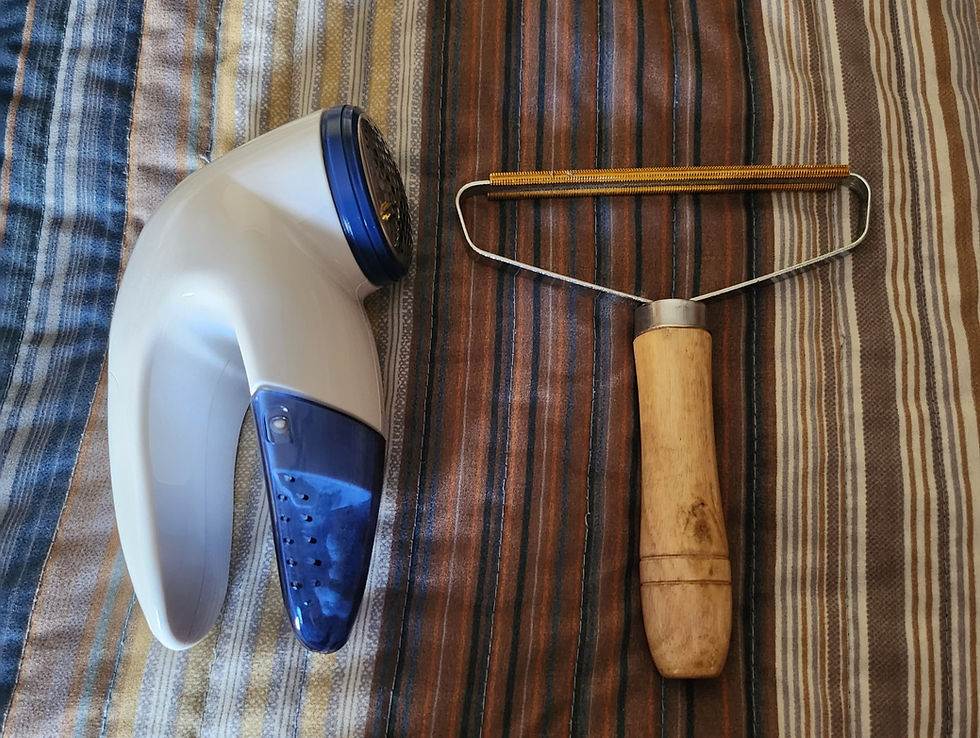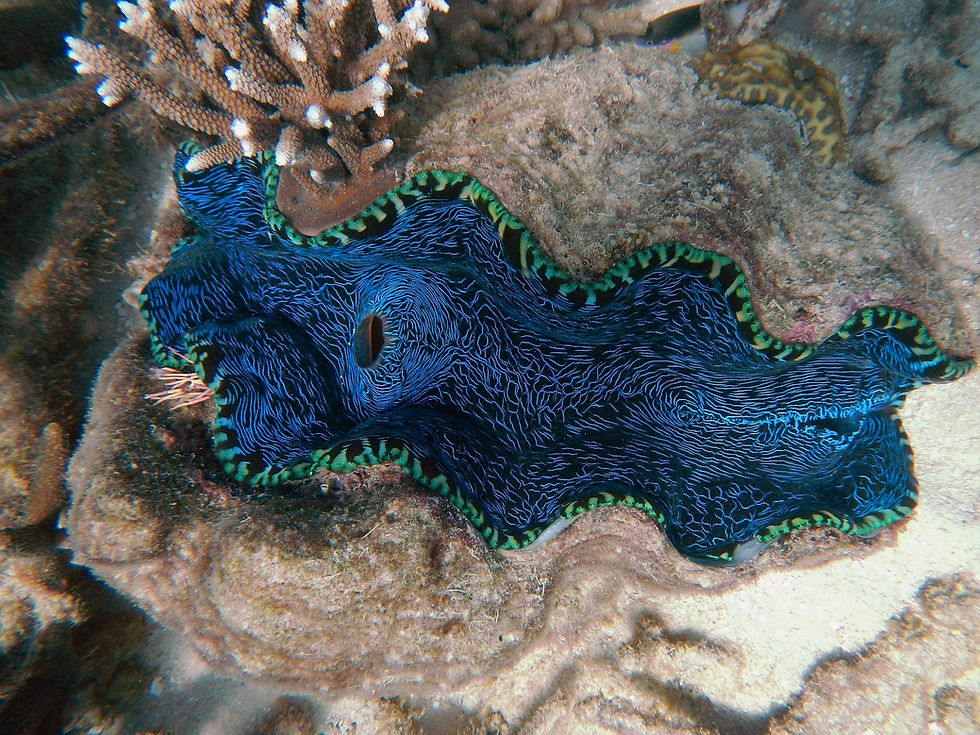Mike Wazowski is Scary | Film Analysis
- PracticalPisces
- Jul 25, 2022
- 13 min read
Updated: Jan 29, 2023
I somewhat dislike Monsters University now because it makes me question the internal validity of Monsters Inc., a movie I grew up watching and love. MU made me realize that there are glaring issues with the world set up by both films, mainly the prequel.

Here are my general questions:
1. Do "Monsters University" and "Fear Tech" not teach the same concepts? Perhaps Mike would have learned what to do to be scary at the latter better than the former. What scares people is subjective (more on that later).
2. "Don't step over that safety line. Human children are extremely toxic." Then is going into a kid's room not a massive safety hazard that is basically suicide without proper gear? No one expects to go into the room of someone who has an extremely harmful and contagious illness without precautions and not to end up with the same ailment. Is this not a suicide job? Is generating power from screams not a suicide mission? Why do the scarers not take chemical baths after leaving the kids' rooms? Why was George the only one washed and shaved (on screen that is)?

3. The blue Monsters University monster with the cap says, "you guys watch us and tell me which school is the best." First of all, no one can see the scarers while they work since they work behind closed doors. The only way they could judge which scaring school was the best was by watching the scare-o-meters on the yellow canisters. Second, even if he produced more scream energy than the tall, avocado-green, frog-like monster, there are several variables for why that have nothing to do with colleges: The child could scare easily. The child could have a fear specific to the blue monster himself. The blue monster could have used a scaring tactic that proved more effective than the one that the frog-like monster used (conversely, if a child was afraid of something that the green monster resembled, he would likely produce more scream energy. Also, his school could have taught him a better method of scaring than the one he decided to use.)

4. Why would the monsters still believe that children are toxic when many a scarer have entered a child's room and come back without any serious injuries? Anything a child touches is deemed toxic as well, so going into a child's room should be ill-advised. Children often play on the ground, so now the ground is lava. Touching the bedpost would also be disastrous because there is no way the child has never put their hand or foot there. The underside of the bed would be a death trap if any of the child's toys are underneath. Touching the toys, as spelled out by the movie, is an obvious no-no because children touch them all of the time. To teach students to avoid these, the scare games leaders set up a team race on a track loaded with toxic, bioluminescent urchins. Ignore the fact that this race breaks many health codes and is ripe for a plethora of lawsuits due to basic rights violations. That is a given. The big problem I wish to focus on is the fact that some monsters would be better equipped genetically to avoid a mess of toys in a child's room. If there are dozens of toys littering the floor, monsters that can stick to walls, or ascend them using their claws, could avoid all of them. Another problem is the monsters pelting the racers with urchins. First, what would the real-world application for this section? If there are toys suspended from the ceiling of a child's room, they should be easy to go around, and if there is a planetarium or a miniature aircraft museum on the ceiling, then the best monster for the job would be a shorter one. Second, there is no logical reason for a scarer to believe that toys, or furniture, would begin flying from the sides of the room. The only scenario I can think of that would justify this fear is the monster walking in on a pillow fight or a child instinctively grabbing a pillow and tossing at the monster. In the latter case, you are (believed to be) finished unless you can dodge the toss. Even then, the only time a plethora of pillows would fly around the room would be if multiple children shared the room and had the same instinct. Once again, if this is a possible event, why even risk your life by going into the room? Also, most toys do not glow in the dark like the urchins, so how do the latter help monsters prepare for navigating around the former? Additionally, night vision is essential for scarers as "scarers work in the dark." How does knowing the exact position of the dangers help monsters learn to find dangers hidden in the shadows?




5. The film seems to forget its own story twenty-six minutes in when Mike and Sully practice roaring and attempt to out-scare each other. Now in all fairness, you can still hear the scare-o-meter, scare simulator, working in the background which means that other students were still being assessed, but the room was quiet enough for everyone to hear what they did. Also, they moved around plenty which is very distracting if it is in your peripheral vision. Additionally, there is a shot where Dean Hardscrabble notices the commotion but does nothing to intervene or attempt to quell it. Why would she be okay with them horsing around while other students are tested (as it could result in a distraction, and subsequently, failure)? Also, had she intervened, her scream canister never would have been knocked onto the ground and emptied (why were those not in glass cases secured to sturdy posts to begin with?). I wonder if the rest of the movie would still happen if Sully did not trip into the canister.
6. This film sends the message of "your appearance determines what job you can take," but it contradicts this message at the climax when it sends the message of "looks can be deceiving." The other members of Oozma Kappa used their physical forms to their advantage, but at the end of the day, they used them to accomplish the same goal: scare a child with a tremendous roar or, in Squishy's case, by creeping him/her out. What would they have done for a child afraid of rocks? How about a child afraid of boots? What about a child afraid of nails? The school teaches monsters to scare with sound, appearance, and stealth, but by that merit, if any monster crept around the room and developed a creepy enough atmosphere, he or she would definitely startle a child enough to evoke a scream from him or her.
7. Possible nitpick, when Sully roars in his introduction, he briefly interrupts the class. When Mike asks if he should continue describing what makes a roar effective, Mr. Knight says "no no, Mister Sullivan's covered it." Except he did not. All he did was roar loudly. The class did not learn what made that roar effective besides the duration and the roar's resonance, which they only heard about because of Mike. I know that flipping a light switch will turn on a light, but if I did not know why that happened, I would be unable to fix the light should it break.
8. Admittedly, this is a nitpick, but when Professor Knight says, "the child sensitivity rating shall be raised from 'bed-wetter' to 'heavy sleeper,'" I could not help but take issue with the statement. It would make more sense if he said, "light sleeper who scares easily" in place of "bed-wetter." A child who wets the bed can also be a heavy sleeper.
9. "Mr. Wazowski, what you lack is something that cannot be taught. You're not scary." But is that not the purpose of your school? To teach monsters how to be scary? Because there is no guarantee that children will find all of the "scarier" monster types scary (especially if they like things similar to Monster Mansion in Six Flags, originally constructed in 1981). This is the entire reason why there are different approaches to scaring. If appearing scary is all it takes, prior to even learning strategies, then what is even the point of teaching scaring as an art? The movie shows that a frightening appearance and strategy is what determines the success of a scare ("it's all about presence! About how you enter the room!"), but it is much simpler than that. A monster must not look like it is poised to attack to be scary. No, it just has to appear like it could harm the beholder. People fear wasps not because they look scary, but because they imagine the insects stinging them. Association is the name of the game. At the end of the day, just send a monster that matches the fear of the child. Easy peasy. Also, if you only want the best of the best, why even allow Mike an opportunity to start the scaring program?

10. "Scariness is the true measure of a monster." Does that mean that monsters who work as construction workers are worthless? What about the monsters who work in sanitation? How about the monsters who work in grocery stores? How do you feel about monsters who work as farmers? Scariness has no role to play in these fields. Now we know which monsters are the lower class.


Now for my main gripe: The monsters determine that Mike is not scary by using monster standards, but that is not the point. They must judge him by what would scare a human, so subsequentially, the movie's point has been defeated. The monsters doubt Mike's abilities due to his appearance, but to a human, that is exactly what would make him downright terrifying: the uncertainty of his capabilities.

Quick tangent: Many have argued that Mike just does not look scary, so he would not be an effective scarer. However, I argue that Shrek does not look all that scary. If his skin tone shifted from green to a shade of brown and his funnel-shaped ears shed, with a pair of large human ears taking their place, he would just look like a tall and wide human wearing primitive clothing. Shrek is not designed to be so hideous that the audience stops empathizing with him. If he were modeled like a traditional ogre, only empaths would care about his plight. The same goes for Mike. If he were truly hideous, fewer people would identify and empathize with him. This does not mean that his final form is not scary. Sully is not scary for the majority of both films. He just looks like a wolf-minotaur hybrid with dragon scales. He looks pretty darn friendly, so much so that Boo is not afraid of him when they meet. It is only after Sully roars in the face of the simulated child that Boo fears him. Similarly, when people learn who Shrek really is, his frightening appearance dwindles and only a fearsome roar can make people briefly experience true horror. What really made Shrek scary were the stories about what his kind did to humans. It was not just his height and size. The uncertainty was bone-chilling.
Humans are not just afraid of predatory animals potentially ripping them open. We also fear animals that we deem "unclean" due to their potential to spread dangerous bacteria, viruses, and/or other pathogens to us. Small rodents are cute to most, but they have the potential to spread deadly viruses to people. Additionally, no one in the human world knows if Mike is venomous. I can definitely assert that Mike's mouth is filled with harmful bacteria, so a single bite from him could potentially leave someone gravely ill. Komodo dragons and Gila monsters might not look particularly scary, but their mouths are serious health hazards. It is undeniable that humans fear deadly illnesses. So, with all this considered, Michael would be terrifying.
Humans also experience irrational fears called "phobias." Some people are afraid of inanimate objects. Some irrational fears are logical under the surface. For example, someone could fear plastic bags (plastophobia) due to the suffocation risk they present. However, those who know how to use them safely, and handle them regularly, might find this fear strange because the danger is easy to circumvent. In Mike's case, if a child was afraid of lima beans or peas, he would be perfect for the role solely based on his appearance, which would be consistent with the movie in two different ways. First, monsters value a terrifying appearance, and looking like something that would terrify a human, no matter what it is, fits the role. Second, the monsters are aware of phobias as shown by Randall calling out the types of fears and Mike answering with the name of the correct phobia.
Mike: "Give me another one."
Randall: "Fear of spiders."
Mike: "Arachnophobia."
Randall: "Fear of thunder."
Mike: "Keraunophobia."
Randall: "Fear of chopsticks."
Mike: "Consecotaleophobia. What is this, kindergarten? Give me a hard one!"
Sounds like he has plenty of material to work with. If Mike acknowledged "pulsophobia" or even "leguminophobia," the movie would have folded in on itself and terminated. If anyone suffering from these fears thinks that Mike would not be scary, I invite you to imagine Mike Wazowski's real world equivalent: A short, scaly, sweet pea-green, egg-shaped cyclops with conical claws, teeth, and horns.

Even if the monster world wanted to appeal to common phobias over the rare varieties, it would still make sense to have special monsters on standby in case children became desensitized to the ones with predatory appearances. For instance, translucent and smooth-skinned monsters would work for children with irrational fears of balloons. (Doing something like this would also decrease the chances of a scream shortage.)
Additionally, doraphobia, the fear of animal fur, exists. Monsters who have an abundance of body hair would scare their specific kids by simply existing. Conversely, children who love fluffy animals like llamas, alpacas, and rabbits, and own plenty of stuffed animals, would find monsters like Sully unscary. Not to mention the fact that children who have been to zoos might find the furry monsters generally aesthetically appealing. Why is the scaring program not tailored to the monsters' abilities individually (a message communicated in the film)?
Furthermore, the movie presents scenarios where it asserts that using a particular scare would be effective for a child who fears something specific.

Here is one example: "I'm a five-year-old girl afraid of spiders and Santa Claus." The student's response is "a seasonal creep and crawl?" In this scenario, there is no specific scare you would use. If you have fingers, you could start your scare by moving them in way that mimics a spider crawling on the bed post (which apparently is not toxic). If you lack fingers, and have five to eight tentacles instead, you could move them around your head as you roar at the child. But guess what! If you have red skin and white fur, you win instantly. Bonus points if you are naturally round. This is a case where your physical appearance determines your success rate due to it matching an image that a child associates with dread.
^ "There's no one type of scary. The best scarers use their differences to their advantage." - Mike Wazowski
Here is another example the movie gives: "...I'm a five-year-old girl on a farm in Kansas afraid of lightning (why is the farm afraid of lightning?). Which scare do you use?" If a monster were capable of generating an electric charge like an electric eel, he or she would instantly win.
Later on: "I'm a seven-year-old boy...afraid of snakes." So, a monster like Randall would fit the role. Also, a roar would probably make him scream if he awoke and suddenly saw a tall, hairy monster lumbering over his bed (not to mention the fact that a child crying would not alert his or her parents quicker than a scream. A sob would probably go unnoticed for a short period of time. A screaming cry would both generate energy and grab the attention of the parents. Either way, running back into the closet would save the monster, unless the child's room is needlessly large, and the closet is dozens of feet away from the bed. Genetically specific invisibility would render this situation moot.) Later in the film, we see all of the monsters roaring at kids regardless of their phobias (they forgot the plot again). When Sullivan roared at the dummy during the final competition of the scare games, he still received a large number of points despite the fact that the listed fear was thunder. How do we know that a kid afraid of thunder would not cry from a monster roaring in his face? Also, why teach nonsnake-like monsters to use certain scares when you could just send a snake-looking monster in? Waste of time.
The lowest setting on the scare simulator, "bed-wetter," which for some arbitrary reason is the easiest child to scare, works in two ways: First, if the child is easy to spook, then so much as opening the door and peering through the doorway would do the job, granted you are scary enough. Second, if the child is awake, but the monster is only in the doorway, and the child is not afraid of him or her, the mission is an immediate failure (plus a child who is a light sleeper would definitely hear the commotion of doors entering and exiting the scare floor, doors slamming shut, and other children screaming, so they might just wake up upon on the closet door opening.) The logical use of the scare simulator would be to gauge where each students' scaring ability is at the start. Hear me out. At the start of the course, each student should use the scare simulator on the highest setting and use a basic scare. If that does the trick, the monster is allowed to progress. Those who require the lowest setting are given a few chances to improve their skills before being removed from the program. Removing a monster prior to seeing them at full potential is nonsensical. If the movie wanted to send the message, "looks can be deceiving," then it should have allowed Mike to become a scarer. The fact that this is a prequel to Monsters Inc. killed the potential of the film. Oh wait, the movie could have ended with Mike being offered a position as a scarer but have him turn it down in favor of coaching. Mike, as bright and hard-working as he is, should be able to apply everything he learned in a way that makes use of his natural abilities.
This movie has the message, "you can be successful playing to your strengths" but it only selects certain monsters to be recipients for it. Only the Oozma Kappa members who are not Mike were accepted as scarers, or considered capable of being such, in the end. This film does the inverse of Kung Fu Panda. Mike never actually developed his own method for being scary. Instead, he just imitated what he learned and what his peers did. Like he said, "the best scarers use their differences to their advantage." What made Xiao Po a successful warrior in the end was him using his physical attributes to develop his own style of kung fu. Monsters University plays out as if Po gave up trying to be a warrior and became an assistant to Shifu instead. Have Mike accomplish his dream, darn it! He could always turn down the role later (sometimes people do things to test the odds, not to make a habit).
Mike deciding to give up becoming a scarer after one failed attempt in the human world is like a new businessperson giving up because they have yet to find their audience. You must use your talents to accomplish your goal. Failure means that your method has failed, not you. You still have a chance if you are willing to take it. There is always next time.





_edited.jpg)











Comments